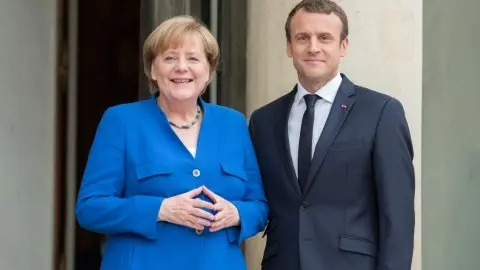China policies to cushion potential trade war impact
China has started pre-emptive measures to buffer the negative impacts of rising trade and investment tensions between China and the US
China adopts measures to soften the impact of a potential trade war
China will not passively sit back if a trade war is unleashed. Indeed, it is already implementing policies to temper any effect We look at some of the more important ones below.
Fiscal support on high-tech sector
Government expenditures on science and technology in China rose by 18.5% year-on-year, year-to-date in May, considerably faster than overall government spending growth of 8.1%.
This is a direct response to sanctions on a Chinese company operating in semiconductor and smartphone operating systems. China intends to invest in its own advanced technologies.
We expect fiscal spending in this sector to increase and be matched by rising funding from private companies to achieve President Xi Jinping's objective of a bigger domestic advanced technology sector.
Monetary policies to assist SMEs
SMEs will likely be hit hard by a trade-war. Consequently, the government has established an SME Working Committee to help small companies navigate through any trade storm.
Even before we see any tangible evidence of the damage the trade war is having, China's strategy is to put in place policies designed to cushion any negative trade spillovers.
At its meeting on 20 June, the central government emphasised lowering the interest costs of SMEs, and including some SME loans as collateral for the Medium Lending Facility (MLF), a loan taken by banks from the central bank.
The meeting also mentioned that targeted cuts in the reserve requirement ratio could help small and medium-sized enterprises.
We expect the central bank to implement the targeted RRR cut in July. And like the previous cut, any cash released could be used to repay high-cost MLF funds borrowed from the central bank. This could avoid cash released by RRR leaking into asset markets.
The reason we don't expect targeted RRR cuts in June is that it might confuse the market into thinking that the RRR cut was a measure to relieve quarter-end liquidity tightness. However, this is a longer-term policy tool, which should not be interpreted in this way.
Would a trade war stop reforms in China?
It really looks as if the central bank (PBoC) is loosening monetary policy to prepare for an escalating trade war and investment tension. But, at the same time, the PBoC is managing liquidity quite tightly to achieve financial deleveraging reform.
Could a trade war slow down or even stop the PBoC's financial deleveraging reform?
We don't believe that, at the current stage, the PBoC will slow its efforts to clamp down on shadow banking activity - the focus of financial deleveraging reform. But if a trade war escalates and weighs on investment, then the central bank may have to step back on reforms and focus instead on supporting the economy by loosening monetary policy.
Policies to ease inflows reducing yuan impact on outflows
During this period of escalating protectionism and rising investment tension between China and the US, the market usually reacts to bad news by causing the US dollar to appreciate against other major currencies. This would also tend to weaken the yuan against the dollar.
If the yuan maintains its weakening trend, this could lead to capital outflows. To avoid a repeat of the quick loss of foreign exchange reserves that occurred between mid-2014 and 2016, the central government has made it easier for foreign companies to do businesses in China.
For example, commencing from 1 July, foreign direct investment into China will follow a negative list control. So business areas not in the negative list could invest in China without restrictions.
Another example is the recent relaxation of QFII and RQFII outflow restrictions, which is to ease worries of foreign investors so that China can attract more inflows (you can read the note here).
We believe more measures to open up the market and attract inflows will be unveiled in the near future. This is important to offset outflows induced by an expected weaker yuan. Without more measures to attract inflows, the central bank could easily become trapped by a fall in foreign exchange reserves and may be forced to strengthen the yuan even if it's not in line with economic conditions.
We expect USDCNY to go to 6.60 by end of 2018 (our note on USDCNY forecast revision is here).
This publication has been prepared by ING solely for information purposes irrespective of a particular user's means, financial situation or investment objectives. The information does not constitute investment recommendation, and nor is it investment, legal or tax advice or an offer or solicitation to purchase or sell any financial instrument. Read more
Download
Download article
21 June 2018
In case you missed it: Divergence and divisions This bundle contains 8 Articles
